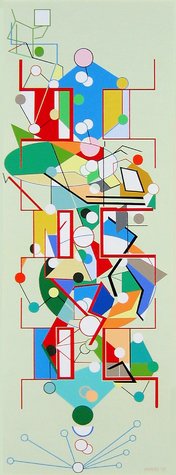System Demonstrations
List of Papers
Chairs
Preface
The 2007 System Demonstration Session of the International Conference on Automated Planning and Scheduling Systems (ICAPS) showcases seven deployed systems and research prototypes for different application domains: automated servicing of satellites; mobile robot applications; course timetabling; web-based personal calendar; and pickup and delivery transport problems.Amadeo Cesta and his colleagues at the Institute for Cognitive Science and Technology in Rome (Italy) and at the European Space Operations Centre in Darmstadt (Germany) present MEXAR2, a deployed system which is daily used by the European Space Agency (ESA) to support ground operators in planning operations for downlinking on-board memory data from the MARS Express spacecraft to Earth.
Caroline Chouinard and her colleagues at the Jet Propulsion Laboratory in Pasadena (USA) present a prototype application of the ASPEN planner to automate satellite servicing operations, including rendezvous and capture, fluid propellant transfer, and in-orbit equipment transfer.
Sylvain Damiani and his colleagues from VEGA and ESA in Darmstadt (Germany) present another space application, the ESTRACK Planning System, which is a deployed system being used by ESA to support ground operators in the allocation of ground station network services.
Matthieu Gallien and his colleagues at LAAS/CNRS in Toulouse (France) present robot planning operations with IXTET planning system. Their demonstration illustrates various temporal planning problems using a simulated autonomous robot rover.
Tomas Müller and his colleagues at Purdue University in Lafayette (USA) present a distributed scheduling system for building course timetables, which was successfully deployed at their university.
Ionnais Refanidis and Anastasios Alexiadis at the University of Macedonia in Thessaloniki (Greece) present SELFPLANNER, a web-based calendar interfaced with Google's Calendar and capable of automatically planning user's tasks.
Finally, Jonne Zutt and his colleagues at Deft University of Technology in The Netherlands present Traplas, a system for planning pickup and delivery transportation problems, together with a companion 3D graphics visualisation tool called TraplasViz.
These demonstrations illustrate well the diversity of application domains that can significantly benefit of planning and scheduling technologies, whether for supporting human operators and robots in various tasks, improving the reliability of automated operations, or reducing costs of operations. The different demos also illustrate the variety of techniques underlying planning and scheduling technologies and the challenges involved in transferring them from research laboratories to the real world. Some of the demo presentations are complementary to papers with the same authors in the technical session of the ICAPS conference.
We are very grateful to the presenters for their effort in making this demo session a successful one. Our thanks also go to Adi Botea, Keri Harvey, and ICAPS chairs for assisting on the logistic side.
Rune M. Jensen and Froduald Kabanza
List of Papers

Ome © Marjorie Mikasen 2005